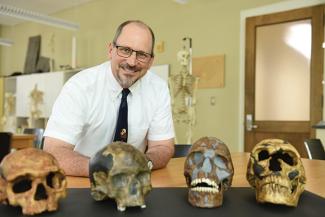In his new book, Cro-Magnon: The Story of the Last Ice Age People of Europe (Columbia University Press), Holliday explores where we as Homo sapiens came from and how we became the modern humans who exist today.
“They’re people like you and me,” Holliday said about the titular prehistoric humans. Cro-Magnons, sometimes called “European early modern humans,” were members of our species, Homo sapiens, who lived in Europe at the end of the last ice age. “They had language, they created art. Some of them lived in the same place all year long, which we often think of only happening with agriculture.”































































